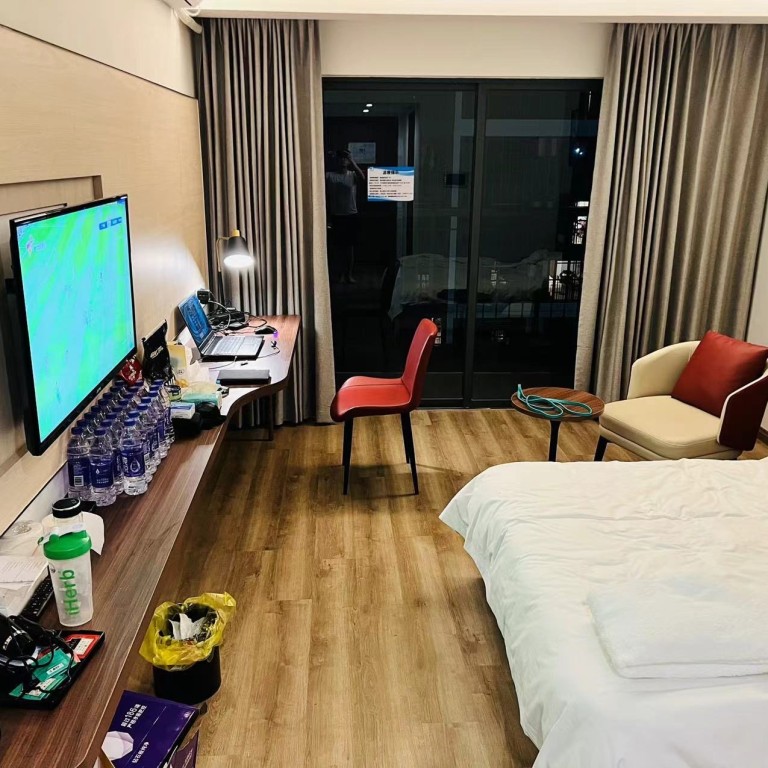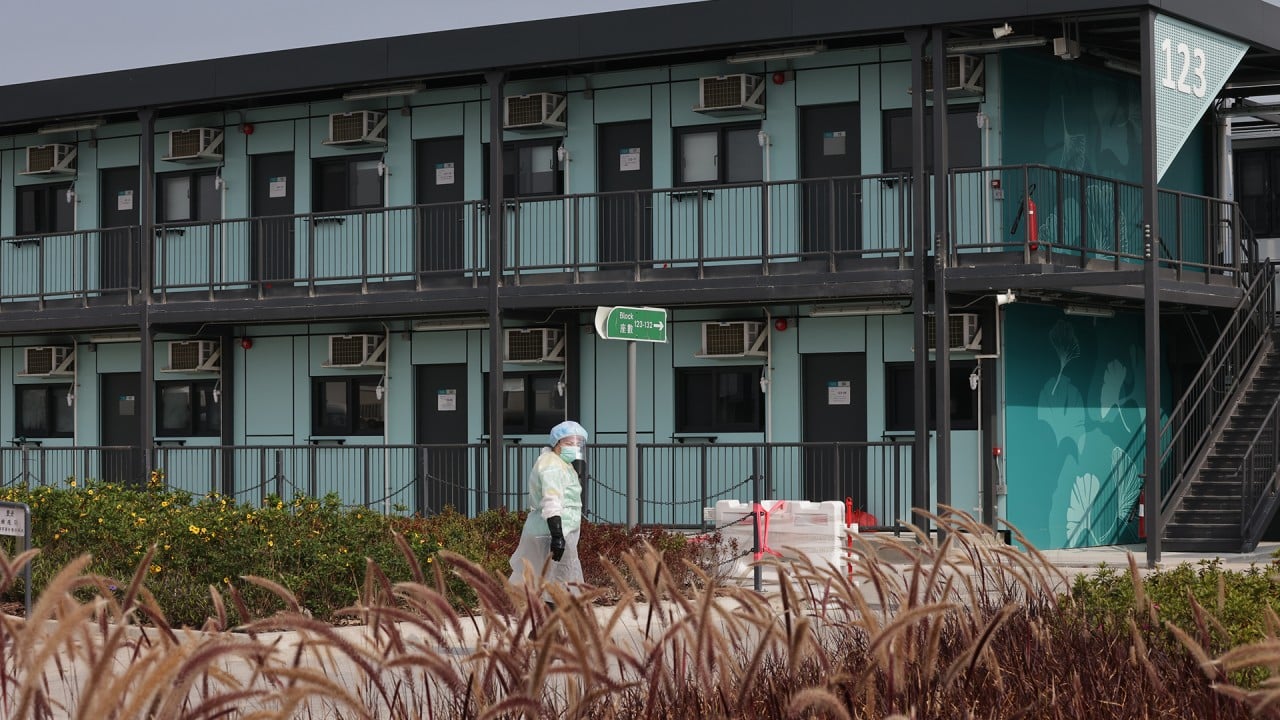
Explainer | What is it like to stay at one of China’s massive quarantine centres in the Greater Bay Area?
- Authorities in four southern Chinese cities have built health stations catering to thousands of travellers at any one time
- Food, conditions and prices vary, according to a range of sources
Quarantining in China can be unpredictable – travellers often have no choice about where they stay so they could be spending three weeks or more in luxury or a cramped, windowless room.
But what is it like staying at one of these health stations? Chinese media reports, social media accounts and the experience of one frequent traveller who recently stayed at the Zhuhai facility offer a glimpse.
1. What is available at the facilities?
The centres provide necessities such as drinking water, disinfecting wipes and rubbish bags.
To prevent cross-infection, each room also has its own air conditioning, ventilation, and sewage systems.
With the exception of those in Guangzhou, each room has a balcony. Washing machines are available at the Dongguan centre and some facilities even offer yoga mats, according to social media posts.
Occupants at all four centres can also open their windows at any time to get fresh air – something not allowed at some hotels during the first few days of quarantine.
Ken Lau, who quarantined at a hotel in Shenzhen and Zhuhai’s health station, said the Zhuhai stint was more relaxing because he could go out on the balcony, while the hotel did not even allow him to open the window for the first few days.
At the Zhuhai facility, up to two people can stay in the same room, including a parent and child up to the age of 16, and helpers for people requiring special care. Couples can also stay together but must provide documentation that they are married.
What next for China’s zero-Covid policy as Omicron travels the world?
2. Can I choose where I stay?
No. Travellers are told on arrival whether they will stay at a health station or a hotel.
People who take the Hong Kong-Zhuhai-Macau Bridge shuttle bus appear to have a higher chance of being assigned to the health station in Zhuhai. But as the Lunar New Year approaches, travellers might be assigned to hotels in Zhuhai if the health station is full.
People who fly to Guangzhou will be assigned automatically to either hotels or health stations in or around Guangzhou, according to social media users. The accommodation is arranged by the Chinese authorities based on flight passenger lists.
Travellers are shuttled to the facilities and cannot go there on their own.
3. How much does the stay cost?
Even though the health stations are state-run facilities, travellers must pay for their stays. The price varies based on the centre and room type.
In Zhuhai, the five room types range in price from US$52 to US$107 and in size from 38 square metres (409 sq ft) to 91 square metres. For example, the 38-square metre king-size room for one person costs US$52 per day. A 42-square metre room with a bedroom and living room costs US$76 per day for one person.
But according to social media users, people may not be able to choose their room type around busy travel periods such as Lunar New Year.
The centres also provide three meals a day for an extra US$13 to US$16 per day, depending on which quarantine centre you are in.
Living with zero Covid in China, 2 years and counting
4. What is the food like? Are deliveries allowed?
In Zhuhai, the menu is set but meals generally include two meat dishes, two vegetable dishes and one serving of fruit.
Some quarantine centres, such as the one in Foshan, do not accept food deliveries.
People can order food during certain hours in Zhuhai but options may be limited and deliveries can take more than an hour to arrive because of the remote location, according to social media users.
Platforms such as Ele.me and Meituan will deliver to the centres and some restaurants in the area have WeChat groups to take orders, according to Lau.
Goods deliveries are also allowed but they must pass security checks and some centres will only accept packages from certain courier firms.
5. Any other tips for getting through the quarantine?
Lau said a small electric cooker could be handy to vary the diet and restaurants will deliver fresh meat and vegetables so people can cook for themselves.
But travellers should check each centre’s rules on appliances.
Light sleepers might also want to bring earplugs, especially if they are going to spend their quarantine in Zhuhai. Some social media users said nearby construction work disrupted their sleep.








